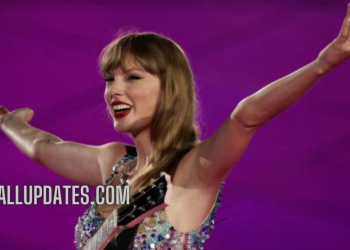The newest doll released by Mattel in an effort to diversify its line-up is a Barbie with Down’s syndrome.
The US toy industry behemoth had previously come under fire for traditional Barbie’s lack of representation of real women.
It has produced dolls with wheelchairs, artificial limbs, and hearing aids recently.
Both “playing with dolls who do not look like themselves” and “all children to see themselves in Barbie” were goals of Mattel.
The 1959 release of the first Barbie doll featured long legs, a small waist, and flowing blonde hair.
According to researchers from the University of South Australia, there is a one in 100,000 chance that a woman will have Barbie’s body type.
While some advocates demanded that Barbie portray a more realistic body image, others with disabilities claimed the dolls were inaccessible to them.
Mattel produced Curvy Barbie, Tall Barbie, and Petite Barbie in 2016 along with a variety of skin tones that represented other ethnicities.
The new doll, according to Mattel’s global president of Barbie & Dolls Lisa McKnight, is intended to “teach understanding and build a greater sense of empathy, leading to a more accepting world.”
“Including Barbies is a significant step in my life,”
To guarantee that its newest doll appropriately depicted a person with Down’s syndrome, Mattel claimed to have worked closely with the US National Down Syndrome Society (NDSS).
The doll resembles a woman who may have the genetic disorder because of its shorter frame, longer torso, rounder face, smaller ears, flat nasal bridge, and almond-shaped eyes.
The puff-sleeved garment has the Down syndrome awareness colours of yellow and blue.
Additionally, the doll wears a pink pendant necklace with three upward chevrons, which stand for the three copies of the 21st chromosome, the genetic component responsible for the traits linked to Down’s syndrome.
As some children with Down syndrome utilise orthotics to support their feet and ankles, it also has pink ankle foot orthotics to complement its costume.
Working on the project, according to Kandi Pickard, president and CEO of NDSS, was an honour.
“Our community is extremely grateful to be able to play with a Barbie doll that resembles them for the first time.
We must never undervalue the influence of representation. We are happy about the development for inclusion at this particular time.
Ellie Goldstein, a British model and supporter of the inclusion, visibility, and understanding of those with Down syndrome, stated she was “overwhelmed” by the doll.
Diversity, she continued, “is important because people need to see more people like me in the world and not be hidden away.”
Ellie claimed it was her “dream” to be one of the five cover stars of the most recent issue of British Vogue.
Similar steps have been taken by other toy companies to try to make their models more inclusive.
Following a campaign by the UK-based #ToyLikeMe organisation, Lego produced its first juvenile disabled mini-figure in 2016—a little wheelchair user sporting a beanie—in response.
The group had accused the Danish company of “pandering to disability stereotypes” because up until that point, the only person in the cast who used a wheelchair was an elderly guy.
The goal of the campaign was to produce more toys that would adequately represent the 770,000 disabled children in the UK.














































